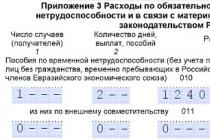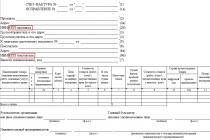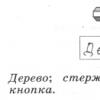Any citizen who buys real estate automatically becomes the owner of the land on which the residential premises are located. This rule applies to both private and apartment buildings.
According to the Housing Code of the Russian Federation, a land plot under an apartment building is considered common collective property, which, in turn, is summed up by the shares of the owners of apartments in this building.
Is it possible to divide the land under an apartment building?
According to Russian legislation, an apartment building is considered to be a house in which there are two or more residential premises that have autonomous exits to common areas (staircases, etc.) or to land plots adjacent to the building. Moreover, each apartment building has some elements of joint property (land under the house, roof, foundation, communications, landings, elevators, etc.)
The law states that all owners of apartments in an apartment building have a certain share in the ownership of joint property in proportion to the size of the total area of the apartment. Accordingly, the share in the common ownership of the land plot under the house is also distributed among apartment owners in proportion to the area of residential premises.
For example, there is a residential building in which there are four separate apartments: two of them are two-room apartments with a total area of 50 square meters. meters, and two are four-room apartments of 100 square meters. meters. Shares in ownership will be distributed as follows: owners of two-room apartments will have one-sixth each, and owners of four-room apartments will have one-third.
We have decided on the size of the shares in the common shared property, but is it possible in principle to divide the land plot under an apartment building?
The Housing Code of the Russian Federation directly states that the territory under an apartment building, as well as the land adjacent to the building, can only be in the collective ownership of all owners of residential premises in this building. That is, the legislation directly states that the division of a land plot under an apartment building is not allowed.
This could be an end, if not for certain nuances of the division of one-story multi-apartment residential buildings. Let's take a closer look at them.
Preliminary division of one-story residential buildings
If on a plot of land there is a multi-apartment residential one-story building, in which there are two, three, four apartments, which, in turn, have separate access to land plots adjacent to the house, they can be divided by allocating shares in kind.
But... In practice, the following often happens: a residential building has several separate apartments, each residential premises has its own entrance, separate from the others, a separate address, there seem to be no obstacles to division, but the land under the building belongs to the category of individual housing construction, and the house has the status multi-apartment
The output will be:
- preliminary registration of the entire house into common shared ownership, by this the owners confirm the intended use of the land plot;
- subsequent allocation of shares in kind.
The partition procedure is quite complicated, but possible. First, the co-owners must establish the possibility of division in technical terms, that is, determine whether it is technically possible to actually divide the apartment building. The answer to this question will be given by an independent construction and technical expertise.
For example, there is a two-flat residential building with a plot of land measuring 40,000 square meters. meters adjacent to it. Each of the apartments has a separate exit, the water supply of the apartments is autonomous, as is the sewerage outlet. Only the foundation of the house and the roof are common. When conducting an independent construction and technical examination, it was established that a real division of the house is technically possible.
If experts have confirmed the possibility of actual division of the building, all owners must obtain permission to rebuild or redevelop the residential building, which they can obtain from the local municipality.
The next step will be the actual division of the house, which occurs by allocating shares in kind. As a result, from one residential apartment building, two (three, four) autonomous, independent from each other parts of one residential building are actually formed.
Until all the owners of a residential building have divided it in kind, there can be no talk of any division of the land plot or the allocation of a separate share from it.
Subsequent division of the land plot
So, the owners of residential premises in a one-story apartment building have allocated the shares of a residential building in kind, and only now can they begin to divide the land plot located under the house and in the territory adjacent to it.
But there are also some nuances here.
For example, the division of land will be permitted only if the process of such division results in autonomous land plots with the same permitted type of use as the primary land plot. In other words, if the original plot of land was intended for residential construction and private household plots, then the newly formed land plots should have the same category.
The second condition for the possibility of dividing land is the so-called “unity of fate” of the allocated share of the house with the land adjacent to this share. That is, the owner who receives a specific share allocated from a common residential building will also become the owner of the plot of land under this part of the house.
Methods for actually dividing an apartment building
Like any other property, the division of a house and the land plot underneath it is possible in two ways:
- Peacefully. This is possible by signing a voluntary agreement on the allocation of shares in a residential building and the land under it.
- Through the court. This method is practiced in cases where the owners of residential premises cannot agree among themselves.
Written agreement
If all apartment owners agree with the allocation of separate premises and the division of the land plot, they can draw up a voluntary agreement on this. In this case, it is necessary to follow a certain procedure, namely:
- Discussing the situation with the owners of other apartments, resolving all the nuances, features, rights of each party and probable material costs.
- Drawing up the text of the agreement.
- A visit by all signatories to the notary's office so that the lawyer verifies all signatures and the document itself.
When visiting a notary, all parties to the agreement must have passports or other documents identifying the signatories, as well as all title documents for residential premises and land.
Division through court
If the residents of an apartment building could not reach an agreement, the problem can be resolved with the help of a court decision. The owner who wants to allocate his actual share in the house and land applies to the judicial authorities with a claim for division of the residential building in kind.
The statement of claim must necessarily contain the following information:
- Details of the judicial authority to which the claim is filed.
- Data on the plaintiff, defendant and third parties, if their participation in the meeting is expected.
- Cost of claim.
- Title documents for the disputed real estate.
- A brief description of the situation prior to filing the claim. Here the applicant can describe the essence of the problem and what steps he took to solve it.
- Links to those articles of the Law that are applicable in a particular case.
- The applicant's claims.
- List of attached documents.
- Date and signature.
The following package of documents must be attached to the statement of claim:
- A copy of the passport of the plaintiff and, if possible, the defendant and third parties involved in the process.
- Registration certificate for the disputed property.
- Legal documents.
- Receipt for payment of state duty.
This list is not complete; depending on the specific situation, other papers may be required. A complete list of necessary documents in relation to your situation will be provided by a lawyer, whom it is advisable to contact at the stage of drawing up a statement of claim and collecting the necessary evidence.
If the owners of apartments in an apartment building decide to divide the land plot underneath it, the right first step is to seek advice from a lawyer for several reasons:
- With such a division, there is a great risk of making a mistake, of taking some wrong steps; the owners risk not only not getting the desired result, but also losing what they have if the division is subsequently declared illegal.
- A competent lawyer will tell you what steps need to be taken, what documents to collect, and if necessary, he will be able to warn against rash steps and illegal actions.
Determination of the standard required area of land
1. INTRODUCTORY PART
The issue of the required area of a land plot is complex and varied; in this article we will try to look at it as simply as possible using specific examples of how to determine the normatively required area of a land plot.
At the moment, when calculating the area of land required to use the property for its functional purpose, experts were guided by the norms of the current urban planning code of the Russian Federation.
According to the Town Planning Code of the Russian Federation, types of permitted use of land plots and capital construction projects; the maximum (minimum and (or) maximum) sizes of land plots and the maximum parameters of permitted construction, reconstruction of capital construction projects, as well as restrictions on the use of land plots and capital construction projects are established in accordance with municipal legal acts. Such acts are “land use and development rules”, which, due to their public significance, are approved by the representative body of local self-government. Publication of municipal legal acts, including Land Use Rules (hereinafter LRU), is usually carried out in city (district) newspapers, and, if possible, are posted on the Internet.
In the absence of adopted PZZ, when calculating the area of the land plot required to use the property for its functional purpose, they are guided by other current municipal legal acts and or (in their absence) current construction, fire, sanitary and epidemiological norms and rules.
Rules include:
1. The procedure for applying the Rules and making changes to them, containing the provisions:
On regulation of land use and development by local authorities
self-government (other authorized bodies);
On changing the types of permitted use of land plots and
capital construction projects by individuals and legal entities;
On the preparation of documentation on territory planning;
On holding public hearings on land use and development issues;
On amendments to these Rules;
On the regulation of other issues of land use and development.
2. A map of urban planning zoning with established territories, within the boundaries of which it is planned to carry out activities for the integrated and sustainable development of the territory, as well as a map (maps) showing the boundaries of zones with special conditions for the use of territories, the boundaries of territories of cultural heritage sites.
3. Town planning regulations.
Thus, in theory, any interested person, if it is necessary to determine the area of a land plot, turns to the website of the administration of the municipal district (where the land plot is located). Next, using a territorial zoning map, it determines the name of the zone, then, according to the text part of the PZZ, determines the maximum parameters of the land plot.
However, in practice, local government bodies systematically fail to finalize the development and adoption of urban zoning documents, which leads to the documents not complying with federal legislation and inadequate information support for activities in this area.
According to the Prosecutor General’s Office for 2016, in the relevant rules there are widespread cases of the absence of maximum sizes of land plots and parameters of permitted construction, unregulated procedures and deadlines for urban planning procedures, and the presence of illegal restrictions on the rights of plot owners. In this regard, prosecutors are forcing local governments to approve such rules.
In total, based on the results of inspections, prosecutors identified more than 17 thousand violations of laws in this area, to eliminate which 4.4 thousand submissions were made, 122 cases of administrative offenses were initiated, over 3 thousand protests were brought against illegal legal acts, 213 applications were sent to the courts . At the initiative of prosecutors, more than 240 persons have already been brought to administrative and disciplinary liability.
Thus, 19 constituent entities of the Russian Federation are still not fully provided with land use and development rules. Among them are the Republic of Dagestan, the Altai Territory, the Arkhangelsk and Moscow regions, and the Nenets Autonomous Okrug.
Next, we will consider options for calculating the standard area of a land plot in the absence of adopted land plots, or in the absence of the corresponding norms in the rules of the maximum size of land plots and parameters of permitted construction.
When calculating the area of land required for the use of a capital real estate construction project for its functional purpose, we will be guided by the current municipal legal acts and or (in their absence) the current construction, urban planning, fire, sanitary and epidemiological standards and other rules.
2. Calculation of the area of land under an apartment building
2.1. Calculation of the area of land under an apartment building in accordance with SP 30-101-98.
If you stumbled upon this article in the open spaces of a boarding school, then you are probably familiar with such a document as SP 30-101-98 “Guidelines for calculating the standard sizes of land plots in condominiums.”
This document is very accessible and uses specific examples to explain the calculation of the area of a land plot using the formula:
S = S x Y,
where S is the standard size of a land plot in the standard for a condominium, m²;
S - total area of residential premises in the condominium, m²;
k U - specific indicator of land share for buildings of different west. number of storeys (Appendix Table A).
We point out that this document is valid, however, after the entry into force of the new Housing Code, from March 1, 2005, the concept of a condominium disappeared from Russian legislation (see Federal Law No. 188-FZ of December 29, 2004). The closest analogue of a condominium is now an apartment building, and several forms of management of this apartment building (including the land plot under it) are provided. Of these, the closest to the general concept of a condominium is the Homeowners Association (HOA).
Current judicial practice shows that it is difficult to use this document in practical terms, since formally the terms used in it (condominium) are not currently used in current legislation; current urban planning norms and rules do not refer to SP 30-101-98.
2.2. Calculation of the area of land for an apartment building in Moscow
Let us point out that calculating the area of a land plot for the operation of an apartment building in Moscow, as in principle everything that concerns land in Moscow, is a secret accessible to not many.
For general information, we point out that in Moscow there are accepted rules for land use and development, but in form and content they do not correspond to anything at all (neither legislation, nor any other adopted PZZ); it is impossible to determine anything on the basis of the Moscow PZZ.
Further, we point out that in Moscow there is a practice of comprehensively calculating the area and boundaries of land plots as part of the work on designing the land surveying of a block. The author of the article will not describe in detail what a land surveying project is, why the project is needed, how it is developed, how it is accepted; you can find this information in the Town Planning Code of the Russian Federation (Article 43). You can read angry articles on the practice of developing and adopting a land surveying project in Moscow on other information resources on the Internet, then we will immediately move on to the practical side of the issue and try to carry out calculations based on the methodology approved by the Moscow Architecture Committee.
So, for clarity, use the resource http://eatlas.mos.ru/. This resource contains approved neighborhood surveying projects. We open, for example, block No. 148 bounded by Barykovsky Lane, Prechistenka Street, Ostozhenka Street, Lopukhinsky Lane.
Below is a real project for surveying the quarter and we analyze the information presented in it. The main information that interests us in this document is the list of regulations to which the authors of the project refer.
The list of regulations includes:
Town Planning Code;
TSN 30-304-2000 Moscow (MGSN 1.01-99) Norms and rules for designing planning and development of Moscow;
Unified guidelines for the development of land surveying projects for the territory of the city of Moscow (order on the MCA dated February 13, 2008 No. 13).
Let's check the area of the land plot located at the address: Moscow, Lopukhinsky lane. 1A, p. 2 for compliance with the requirements of urban planning norms and rules, MGSN 1.01-99 “Norms and rules for designing planning and development of the city of Moscow” and the requirements of uniform guidelines for the development of land surveying projects for the territory of the city of Moscow (order on MCA dated 13.02. 2008 No. 13), and we will calculate the size of the normatively required area of the land plot in accordance with the block surveying project.
When calculating the normatively required area of the territory of a residential building located at the address: Moscow, Lopukhinsky lane. 1A, p. 2, it is necessary to indicate that, according to the set of rules 42.13330.2016 (clauses 5.5, 5.6, 5.7), when planning the organization of residential zones, their differentiation should be provided for by type of building, its number of storeys and density, location, taking into account historical and cultural , natural-climatic and other local features. The type and number of floors of residential development are determined in accordance with the socio-demographic, national household, architectural, compositional, sanitary and hygienic and other requirements for the formation of a residential environment, as well as the possibility of developing social, transport and engineering infrastructure and ensuring fire safety.
Residential areas may include:
development zone with multi-storey residential buildings (9 floors or more);
development zone with mid-rise residential buildings (from 5 to 8 floors, including attic);
development zone with low-rise multi-apartment residential buildings (up to 4 floors, including attic);
construction zone with blocked residential buildings;
development zone of individual detached residential buildings with private land plots.
In areas of compact residence of small ethnic groups, when forming residential zones and choosing the type of housing, it is necessary to take into account the historically established way of life of the population.
Note. In regional and local urban planning standards, land use and development rules, and in their absence, in urban planning documentation, it is allowed to clarify the typology of residential development, as well as provide for additional restrictions on the placement of individual objects in residential development zones.
Calculation indicators for the volumes and types of residential development should be made taking into account the current and predicted socio-demographic situation and income of the population. In this case, it is recommended to provide various types of residential buildings, differentiated by the level of comfort in accordance with Table 5.1 The average calculated indicator of housing supply depends on the ratio of residential buildings and apartments of different levels of comfort and is determined by calculation.
Table 5.1 - Structure of the housing stock, differentiated by level of comfort
|
Type of residential building and apartment according to comfort level |
Standard apartment area per person, m |
Formula for settling a residential building and apartment |
Share in total housing construction, % |
|
Business class |
k=n+1 |
10
|
|
|
Economy class |
k=n |
25
|
|
|
Municipal |
k=n-1 |
60
|
|
|
Specialized |
k=n-2 |
7
|
|
|
Notes 1. k - the total number of living rooms in an apartment or house; n is the number of living people. 2. In the numerator - for the first time, in the denominator - for the estimated period. 3. The specified standard indicators are not the basis for establishing the actual occupancy rate. |
|||
The size of the land plot for a house (apartment) is determined by regional urban planning standards, taking into account the demographic structure of the population, depending on the type of house and other local features. The maximum sizes of land plots for individual housing construction and personal subsidiary plots are established by local government bodies. It is allowed to allocate a part of the land plot that is missing from the established maximum norm outside the residential zone for running personal subsidiary plots.
Thus, in order to check the size of a land plot (intended for the operation of an apartment building) for compliance with the norms of land and urban planning legislation, in accordance with the block surveying project, we will calculate the size of the normatively required area of the land plot.
We will calculate the normatively required area of the territory of a residential building site in accordance with MGSN 01-99, unified methodological guidelines for the development of land surveying projects for the city of Moscow (Order on MKA dated 02/13/08 No. 13), Moscow Government Decree No. 773-PP dated October 11, 2005 of the year “On amendments to MGSN 1.01-99 “Norms and rules for designing the planning and development of Moscow” in the territories of morphotypes of historical buildings.
Separately, we point out that the obtained calculated indicators of the normatively required area of a land plot may not be accurate, since the initial data for the calculations are not confirmed by technical inventory and cadastre data, as well as field measurements. The boundaries of the building located at the address: Moscow, Lopukhinsky lane. 1A, p. 2 were built on the basis of data from the cartographic basis in M 1:2000 of the land surveying project for the territory of block No. 148 of the Khamovniki district, bounded by Ostozhenka Street, Barykovsky Lane, Prechistenka Street, Lopukhinsky Lane (3rd stage), as well as the same project strengthening the foundation of the building (see appendices).
Table No. 1
Calculation of the regulatory required area of the territory of a residential building located at the address: Moscow, Lopukhinsky lane. 1A, p. 2
|
Awoods |
Unique number of a building, structure, registered in GorBTI |
Year of construction of the building or structure |
Area of the building, structure in the external dimensions of the basement of the building (sq.m) |
Functional use of buildings, structures, territories |
Total area of residential premises of buildings (sq.m) |
Total area of built-in, built-in, attached non-residential premises of buildings and structures (sq.m) |
Total area of detached non-residential buildings and structures |
Estimated indicators of the site |
|
|
Regulatory required area of land (ha) |
|||||||||
|
minimum |
maximum |
||||||||
|
Lopukhinsky lane d. 1A p. 2 |
17897 |
1913 |
Residential building |
2184 |
0.1255 |
||||
In accordance with the unified methodological guidelines for the development of land surveying projects for the territory of the city of Moscow (Order on the Moscow City Council dated 13.02.08 No. 13) clause 6.3.3.1. Calculation of the minimum value of the normatively required area for residential and non-residential buildings is carried out according to the formula:
Snc (Zh, NZhmin) = SZh, NZh *100/n stuck
Snc (Zh, NZhmin) - the actual area according to the external dimensions of a residential or non-residential building, building, the area of the site in the external dimensions of the basement of the building.
N is the maximum built-up area of the site in the quarter in accordance with the SPPM dated October 11, 2005, No. 773-PP.
According to the Decree of the Moscow Government No. 773-PP dated October 11, 2005 “On amendments to MGSN 1.01-99 “Norms and rules for designing the planning and development of Moscow” in the territories of morphotypes of historical buildings,” the territories of the traditional multi-story morphotype include the territories of blocks that meet the following criteria:
For the quarter as a whole:
The minimum area of the territory is 1 hectare;
Development density - no more than 25 thousand sq. m/ha;
The built-up area of the quarter is from 30 to 60%;
The average number of floors in a block is 3-4 floors.
For individual objects:
Number of floors - no more than 7 floors;
The length of the building is no more than 80 meters;
Territory of sites of historical households -
0.15 - 0.6 ha;
Building volume (total floor area)
On the territory of a historical home ownership site -
2,000 - 18,000 sq.m.
When identifying the territory of a morphotype block, it is allowed to include within the boundaries of the morphotype territory existing buildings with a number of floors from 8 to 14 floors, the building area of which does not exceed 20% of the “spot” area of the entire building of the block.
Based on the above data, we will determine the minimum and maximum area of the land plot for the house located at the address: Moscow, Lopukhinsky lane. d. 1A p. 2.
Snc (Zh, NZhmin) = SZh, NZh *100/n zastr=753*100/60%=1255 sq.m. min land area
According to clause 6.3.3.2. unified methodological guidelines for the development of land surveying projects for the territory of the city of Moscow, the calculation of the maximum normatively required site area for residential, non-residential buildings and buildings is adopted in accordance with the PPM dated 10.11.05 No. 773-PP “On amendments to MGSN 1.01.99 “Norms and rules for designing the layout and development of Moscow in the territories of morphotypes of historical buildings. According to the Decree of the Moscow Government No. 773-PP dated October 11, 2005 “On amendments to MGSN 1.01-99 “Norms and rules for designing the planning and development of Moscow” in the territories of morphotypes of historical buildings” For individual objects, the territory of plots of historical households can be 0.15 - 0.6 ha.
2.3. Conclusions on the study of the area of land under an apartment building
1) The area of land required for operation and maintenance of the facility is presented in table No. 2 and amounts to
Snc (Zh, NZhmin) = 1848 sq.m. min land area
According to the Decree of the Moscow Government No. 773-PP dated October 11, 2005 “On amendments to MGSN 1.01-99 “Norms and rules for designing the planning and development of Moscow” in the territories of morphotypes of historical buildings” For individual objects, the territory of plots of historical households can be 0.15 - 0.6 ha.
Thus, Snc (Zh, NZhmax) = 6000 sq.m. max land area.
2) According to the land surveying project No. 148 of the Khamovniki district, the minimum area of the land plot located at the address: Moscow, Lopukhinsky lane. 1A, building 2 is 0.089 sq.m., mix land area is 0.098 sq.m. Thus, the territory surveying project No. 148 does not comply with the requirements of urban planning norms and rules, MGSN 1.01-99 “Norms and rules for the design of planning and development of the city of Moscow” and the requirements of uniform guidelines for the development of land surveying projects for the city of Moscow (order on MCA dated 13.02 .2008 No. 13).
3) It is not possible to verify the conclusions about the areas of land plots presented in land surveying project No. 148 (and, in principle, in all other land surveying projects), since in all projects without exception there are no formulas for calculating these areas. Let us note that on page No. 4 of the land surveying project for block No. 148 for plot No. 4 (Lopukhinsky lane 1A, building 2) it is indicated that the area of the land plot calculated by the Moskomarkhitektura complies with the standards, while the calculation of the area was made on the basis of a document called “Mandatory resolutions of the Moscow City Duma on the construction part of 1871.”
4) By themselves, MGSN 1.01-99 and “Unified guidelines for the development of land surveying projects for the territory of the city of Moscow” generally comply with the requirements of urban planning norms and rules (SP 42.13330.2016). But in practice, during the actual development of land surveying projects in Moscow, nothing is taken into account on their basis. The total amounts are written as needed by the Moscow city government.
2.4. Conclusion on the topic
At the moment, the legislation does not have clear standards and methods for calculating the standard area of a land plot for an apartment building.
For this reason, when calculating the standard area of a land plot, you can be guided by the guidelines for calculating the standard sizes of land plots in condominiums SP 30-101-98, or the norms and rules for designing the layout and development of the city of Moscow" MGSN 1.01-99.
However, in the context of forensic examination, the question of the correctness of using these regulations remains open.
3. Calculation of the area of land under industrial enterprises.
As stated earlier, according to the Civil Code of the Russian Federation, the maximum minimum and maximum sizes of land plots, as well as the maximum parameters of permitted construction, are established in accordance with the rules of land use and development. In the absence of accepted rules, when calculating the area of a land plot required to use a capital construction project for its functional purpose, they are guided by the current urban planning norms and rules.
When calculating the area of land plots required for the operation of industrial facilities, they are guided by the standards of SP 18.13330.2011 “Master plans of industrial enterprises”.
The area of a land plot is calculated based on the building density of the land plot. Building density is defined as the sum of the areas occupied by buildings and structures of all types, including sheds, open technological, sanitary, energy and other installations, overpasses and galleries, loading platforms, underground structures (reservoirs, cellars, shelters, tunnels above which buildings and structures cannot be placed), open parking lots of cars, machines, machinery and open warehouses for various purposes, as well as reserve areas on the territory of the facility, designated in accordance with the design assignment for the placement of buildings and structures on them (within the dimensions of the specified buildings and structures), while the dimensions and equipment of parking lots and warehouses are adopted according to the standards of technological design of enterprises. The table in Appendix B SP 18.13330.2011 shows the minimum development coefficient for the territory of production facilities. Chemical industry 11 Paint and varnish industry
12 Organic synthesis products
AND based on the requirements of SP 18.13330.2011 for an industrial facility for the production of plastic products, the minimum building density is 50%. Then the maximum area of the land plot according to the requirements of SP 18.13330.2011 will be:
2457 sq.m. (actual built-up area)/0.5 (percentage of built-up 50%) = 4914 sq.m. (maximum land area based on the maximum percentage of development).
About 100 million Russians live in apartment buildings, which is 2/3 of the total population of the Russian Federation according to Rosstat. It is not surprising that many people are concerned about the issue. Children's playgrounds, parking lots, plantings, unplanned buildings under the windows of residents are objects of financial, environmental, social, legal and other aspects of law.
What laws regulate property relations in this case?
- Housing Code of the Russian Federation (Articles 33, 34, 36, 37, 44);
- Federal laws:
- No. 189-FZ dated December 29. 2004 (Article 16).
- No. 221-FZ of July 24, 2007 (Articles 38, 39);
- No. 191-FZ of December 29, 2004 (Article 6);
- Decree of the Government of the Russian Federation No. 576 of 08/07/2002.
- Decree of the Government of the Russian Federation No. 1223 of September 26, 1997. (as amended on August 21, 2000);
- Order of the Ministry of Justice of the Russian Federation No. 29 of February 14, 2007, etc.
What is the procedure for determining the size and boundaries of a site?
 The size of the plot is determined in accordance with Land Law. According to the law on urban planning activities, they are calculated based on actual volumes of land use and approved urban planning rules.
The size of the plot is determined in accordance with Land Law. According to the law on urban planning activities, they are calculated based on actual volumes of land use and approved urban planning rules.
Answer: No, the decision to register land ownership is made on a voluntary basis, by voting at a general meeting.
Question: Are there any restrictions on the intended use of a land plot registered as common shared ownership?
Answer: Yes, decisions and actions regarding the use of privatized plots should not contradict the current legislation of the Russian Federation.
Question : Are there standards for the size of privatized plots?
Answer: No, there are no strict standards. At the general meeting of owners, residents must decide on the size of the site for boundary survey work. They can be both maximum and minimum (including the area under the house and the entrances to it).
Question: If there have been previous surveys in this area, is it possible to submit a request to change the size of the site?
Answer: No. In this case, you can submit an application for registration of ownership of a land plot with precisely defined boundaries and size (according to the current Boundary Survey Plan).
Question: What official documents regarding the registration of the site should I receive?
Answer: Geodetic plan, Certificate of registration of common shared ownership (issued at the local representative office of Rosreestr).
Land under an apartment building: how can it be used?
- many people have a more or less clear idea of how exactly to obtain personal ownership of a plot of land under an apartment building? More details in the video.
A lot of disputes between owners of premises in apartment buildings and management companies arise around the local area. If a land plot under a residential building is formed and registered in the cadastral register, then it is included in composition of common property in MKD. Consequently, the owners pay the management company for cleaning it. And management companies are required to maintain the local area in proper order for a monthly fee.
But often the land plot for MKD is not formed and is not registered in the cadastral register. Therefore it is impossible to determine boundaries of the local area, included in the common property of the owners of premises in the apartment building. The situation raises many questions and problems. How to register a land plot as the common property of an apartment building? Who determines its boundaries and how? What is a local area? When does the management company have the right to include in the receipt the column: cleaning of the local area? We'll try to figure it all out.
Adjacent territory as part of the common property of the apartment building
A land plot under a residential building is recognized as the adjacent territory with elements of landscaping and landscaping, which relates to the objects of common property of the owners of premises in the apartment building (Part 1 of Article 36 of the Housing Code of the Russian Federation). This common property, which cannot become someone's private property. The size and boundaries of the site remain unchanged, unless the owners at the general meeting decide to carry out reconstruction (clause 4 of article 37 of the Housing Code of the Russian Federation).
The boundaries and size of the local area formed under the MKD are determined in accordance with the requirements of land and town planning legislation (clause 4, part 1, article 36 of the Housing Code of the Russian Federation).
In paragraph 3 Rules for maintaining common property in apartment buildings(RF RF No. 491 dated August 13, 2006) states that when determining the composition of the common property of an apartment building, it is necessary to be guided by the data of the Unified State Register and the state land cadastre on the rights to real estate that are common property. If there are discrepancies or contradictions between information on the composition of common property contained in Rosreestr, with the documentation of state technical or accounting records of the management company, or technical documentation for MKD, data from the Unified State Register will have priority.
Transfer of the land plot under the house into the ownership of the owners of the premises in the apartment building
The year the house was built is important. Article 16 of Federal Law No. 189 dated December 29, 2004 “On the entry into force of the Housing Code of the Russian Federation” approves the conditions and procedure for the transfer of a land plot into common ownership of the owners of premises in the apartment building located on it.
From this it follows:
- if the land plot under the MKD was formed before the entry into force of the Housing Code of the Russian Federation and consists of state cadastral registration, then it passes free of charge into the common ownership of the owners of the premises in the house (Part 2 of Article 16 of Federal Law No. 189).
- owners of premises in an apartment building, the land plot under which has not been formed, can independently apply to the authorized bodies of state power or local government with a written application for their formation. The application will serve as the basis for the government body to form a land plot and place it on cadastral registration(Clause 3 of the Resolution of the Constitutional Court of the Russian Federation of May 28, 2010 No. 12-P).
Residential buildings built after the entry into force of the Housing Code of the Russian Federation are put into operation only if data on the location of the boundaries of the land plot under the apartment building are entered into the state real estate cadastre. The land plot under the house becomes the common property of the homeowners from the moment it is registered with the state cadastral register.
As a rule, an agreement is concluded between the management company and the local government body, according to which the management company undertakes to clean up and maintain in proper order the disputed land plot under the house. In turn, the local government body, under the same agreement, provides subsidies to the management company.
Judicial practice
As we have already noted, there is rich judicial practice in cases concerning property rights to the local area MKD, as well as challenging the payment for its cleaning. The owners of premises in the house and management companies, as well as the residents of the house, are constantly suing each other over the land plot under the apartment building.
How to register ownership of a land plot under an apartment building?
To avoid various misunderstandings and legal disputes regarding determining the boundaries of the local area under an apartment building, it is necessary to form a land plot on which the house is located and register it with the cadastral register. How to do this?
To register ownership of a land plot under an apartment building, you should follow the following algorithm of actions.
Step 1 Conducting a general meeting of owners of premises in the apartment building on the formation of a land plot
Step 3 Registration of the land plot for cadastral registration
With written application for cadastral registration a person authorized by the decision of the general meeting of owners of premises in the house (clause 1 of article 20 of Federal Law No. 221 of July 24, 2007) must apply for a plot of land under an apartment building.
Step 4 Collecting a package of documents for registering the right of common ownership of a land plot
Since 2015, plots that are part of the common property of apartment buildings are not subject to land tax (clause 6, clause 2, article 389 of the Tax Code of the Russian Federation).
It is much easier to hold a general meeting of owners and decide on the inclusion of a land plot in the common property of the house with the help of.
According to Part 5 of Article 16 of the Federal Law of the Russian Federation of December 29, 2004 N 189-FZ “On the entry into force of the Housing Code of the Russian Federation”:
Currently, the purchase of housing automatically makes the buyer a co-owner of the land plot on which the apartment building is located - of course, if the developer did not violate the law during construction.
As stated in Part 5 of Article 16 of the Federal Law of the Russian Federation of December 29, 2004 N 189-FZ “On the entry into force of the Housing Code of the Russian Federation”:
From the moment the land plot is formed and its state cadastral registration is carried out, the land plot on which the apartment building and other real estate objects included in such a building are located passes free of charge into the common shared ownership of the owners of the premises in the apartment building.
If the land plot has already been formed (there is a cadastral number), then it ALREADY belongs to the owners of the MKD premises and the law does not provide for any additional actions to “survey”, “privatize”, or “register” the land plot.
If there are several apartment buildings on a plot of land and the owners of the premises of one or all houses can carry out land surveying, i.e. divide one common land plot into several according to the number of apartment buildings.
If the owners of MKD premises have absolutely nothing to do, they can even register ownership of the land plot in the Unified State Register:
In accordance with paragraph 2 of Article 23 of the Federal Law of July 21, 1997 N 122-FZ "On state registration of rights to real estate and transactions with it" (hereinafter referred to as Law N 122-FZ) state registration of the occurrence, transition, limitation (encumbrance) ) or termination of the right to residential or non-residential premises in apartment buildings is at the same time state registration of the inextricably linked right of common shared ownership of common property. At the same time, a certificate of state registration of rights in connection with the state registration of the right of common shared ownership of real estate objects is not issued to the owner of the premises in an apartment building.
The Ministry of Justice of the Russian Federation, in letter No. 04/3201-EZ dated April 21, 2006, clarified that if rights to property subject to state registration arise from the moment of their state registration (clause 2 of Article 8 and Article 223 of the Civil Code of the Russian Federation ), then the state registration of these rights is of a legal nature, and in the case where the right to real estate, subject to state registration, arises in accordance with federal law not from the moment of state registration (clause 5 of article 16 of Federal Law No. 189-FZ) , state registration is of a legal nature.
Thus, housing legislation establishes the emergence of the right to the common property of an apartment building, including a land plot, regardless of the presence of state registration of the right of shared ownership of the common property of an apartment building.
Thus, the owners of premises in apartment buildings have the right of common shared ownership of the land plot on which such houses are located, in accordance with Article 16 of Law N 189-FZ, arises from the moment the land plot is formed and its state cadastral registration is carried out. At the same time, state registration of the right of at least one owner of residential or non-residential premises in an apartment building (and simultaneous state registration of the inextricably linked right of common shared ownership of common property in an apartment building, including a land plot) is a legal act of recognition and confirmation by the state the emergence of rights of owners of premises in an apartment building to the specified property, including a land plot.
When registering the ownership of a land plot in the Unified State Register, subsection No. 3-3 will indicate all the owners of apartments who live in the apartment building located on this land plot, but at the same time they cannot allocate “their” plot from the common shared ownership, that is, on it will create property with the limitation of a joint easement. In addition, to conduct such an event, the personal participation of 100% of the owners of apartment buildings is required.
Often, the desire of owners of apartment building premises to register their ownership of a land plot is explained by ignorance of the laws, namely:
What, according to Article 273 of the Civil Code of the Russian Federation,“when the ownership of a building or structure that belonged to the owner of the land plot on which it is located is transferred, the ownership of the land plot occupied by the building or structure and necessary for its use is transferred to the acquirer of the building or structure.”
And most importantly, the Housing Code of the Russian Federation clearly states that the land under an apartment building is the collective property of the residents.
Article 36 of the RF Housing Code. Ownership rights to common property of premises owners in an apartment building:
1. The owners of premises in an apartment building shall own, by right of common shared ownership, the common property in the apartment building, namely:
4) the land plot on which this house is located, with elements of landscaping and improvement, other objects intended for the maintenance, operation and improvement of this house and located on the specified land plot. The boundaries and size of the land plot on which the apartment building is located are determined in accordance with the requirements of land legislation and legislation on urban planning.
Since the land plot under the house is the common property of the owners of the premises in an apartment building from the moment they acquire ownership of such premises, then the ownership of the land plot under the apartment building is legally linked to the ownership of the premises in this building and follows its fate. You can purchase premises in an apartment building only with a share of the land plot. And sell - only with a share. (Article 38 of the RF Housing Code).
So, when shareholders acquire ownership of apartments, the transfer of ownership of a land plot occurs automatically, by force of law.
Therefore, there is no need to additionally confirm your right to a land plot by registering it in the Unified State Register.
To find the cadastral number of a land plot, you can use the public cadastral map of Russia
If, after reading the article, you still have an irresistible desire to register the right to common property in the Russian Register, then you should take the following steps:
According to paragraph 1 of Art. 36 Housing Code of the Russian Federation, paragraph 2 of Art. 36 of the Land Code of the Russian Federation, the owners of premises in an apartment building own by right of common shared ownership the land plot on which the house is located. The plot is recognized as indivisible. The owner's share in the right of common ownership of the property is proportional to the size of the total area of the premises belonging to him and cannot be allocated in kind.
Based on the decision of the general meeting of owners, any person authorized by the meeting (applicant) has the right to apply to government authorities with an application for the formation of the land plot on which the apartment building is located (Article 16 of the Federal Law of December 29, 2004 No. 189-FZ “On the Entry into Force Housing Code of the Russian Federation").
The boundaries of land plots on which apartment buildings are located are established on the basis of survey projects. From the moment of state cadastral registration, the land plot on which the apartment building is located and other real estate objects included in the building are transferred free of charge into common shared ownership.














